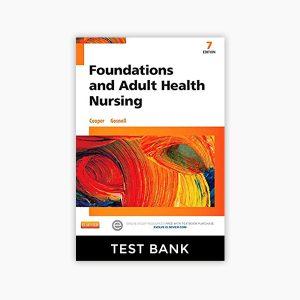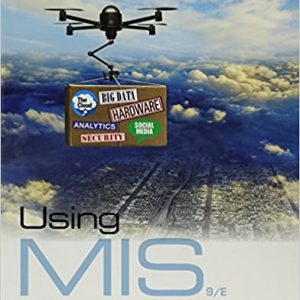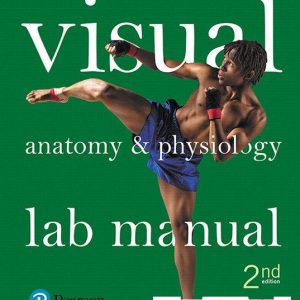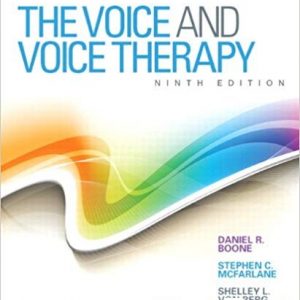Foundations and Adult Health Nursing 7th edition Cooper, Gosnell Test Bank

Product details:
- ISBN-10 : 0323100015
- ISBN-13 : 978-0323100014
- Author: Kim Cooper, Kelly Gosnell
Description:
Chapter 3: Documentation
Cooper and Gosnell: Foundations and Adult Health Nursing, 7th Edition
MULTIPLE CHOICE
1.What does documentation of type of care, time of care, and signature of the person prove?
| a. | The person who signed the documentation did all the work noted. |
| b. | No litigation can be brought against the person who signed. |
| c. | Interventions were implemented to meet the patient’s needs. |
| d. | The patient’s response to the intervention was positive. |
ANS: C
Documenting type of care, time of care, and signature of the person results in recording the interventions that are implemented to meet the patient’s needs. Many charting entries include doctor’s visits, presence of family, or interventions by other departments. Patient response to some interventions is not always positive.
PTS: 1 DIF: Cognitive Level: Comprehension REF: Page 38
OBJ:1TOP:Documentation
KEY: Nursing Process Step: Implementation MSC: NCLEX: N/A
2.Why is documentation especially significant in managed care?
| a. | The hospital needs to show that employees care for patients. |
| b. | Institutions are reimbursed only for patient care that is documented. |
| c. | Patients might bring lawsuits if care was not given. |
| d. | Documents may become part of a lawsuit. |
ANS: B
Cost reimbursement rates by government plans (Medicare, Medicaid) are based on the prospective payment system of diagnosis-related groups (DRGs); a system that classifies patients by age, diagnosis, surgical procedure, and other information with hundreds of different categories to predict the use of hospital resources, including length of stay, resulting in a fixed payment amount.
PTS: 1 DIF: Cognitive Level: Comprehension REF: Page 40
OBJ: 1 TOP: Documentation KEY: Nursing Process Step: N/A
MSC:NCLEX: N/A
3.The nurse charts only additional treatments done, changes in patient condition, and new concerns. What is this system of documentation?
| a. | SOAP |
| b. | Block |
| c. | CBE |
| d. | Focus |
ANS: C
Charting additional treatments done, changes in a patient’s condition, and new concerns during the shift is charting by exception (CBE).
PTS: 1 DIF: Cognitive Level: Comprehension REF: Page 46
OBJ: 1 | 5 | 7 TOP: Documentation KEY: Nursing Process Step: N/A
MSC:NCLEX: N/A
4.What form explains the lapse when events are not consistent with facility or national standards of expected care?
| a. | Subjective data |
| b. | Focus chart |
| c. | Incident report |
| d. | Nursing assessment |
ANS: C
An incident report is completed when patient care was not consistent with facility or national standards. The form explains the event, time, extent of injury, and who was notified.
PTS: 1 DIF: Cognitive Level: Knowledge REF: Page 47
OBJ: 1 | 7 TOP: Documentation KEY: Nursing Process Step: N/A
MSC:NCLEX: N/A
5.The staff from all disciplines is developing integrated care plans for a projected length of stay for patients of a specific case type. This is known as a:
| a. | nursing order. |
| b. | Kardex. |
| c. | nursing care plan. |
| d. | critical pathway. |
ANS: D
Critical pathways allow staff from all disciplines to develop integrated care plans for a projected length of stay for patients of a specific case type.
PTS: 1 DIF: Cognitive Level: Knowledge REF: Page 51
OBJ:8TOP:Documentation
KEY: Nursing Process Step: Implementation MSC: NCLEX: N/A
6.What makes home health care documentation unique?
| a. | Some charting is retained at the hospital. |
| b. | The physician’s office needs separate charting. |
| c. | Different health care providers need access. |
| d. | The physician is the pivotal person in the charting. |
ANS: C
Home health care documentation has unique problems because of the need for different health care workers to access the medical record.
PTS: 1 DIF: Cognitive Level: Comprehension REF: Page 53
OBJ: 9 TOP: Documentation KEY: Nursing Process Step: N/A
MSC:NCLEX: N/A
7.What regulates standards for long-term care documentation?
| a. | OBRA |
| b. | Title XXII |
| c. | Nursing diagnoses |
| d. | The care plan |
ANS: A
OBRA (Omnibus Budget Reconciliation Act) was a significant Medicare and Medicaid legislation for long-term health care documentation.
PTS: 1 DIF: Cognitive Level: Knowledge REF: Page 53
OBJ: 10 TOP: Documentation KEY: Nursing Process Step: N/A
MSC:NCLEX: N/A
8.What is the nurse required to do to adhere to the concept of confidentiality for the patient’s medical record?
| a. | Provide information only to another nurse |
| b. | Provide information only to an attorney |
| c. | Share information only with the family |
| d. | Have a clinical reason for reading the record |
ANS: D
The nurse should not read the patient’s medical record unless there is a clinical reason for doing so.
PTS: 1 DIF: Cognitive Level: Comprehension REF: Page 54
OBJ: 4 TOP: Confidentiality KEY: Nursing Process Step: N/A
MSC:NCLEX: N/A
9.Documentation is necessary for the evaluation of patient care. Of which phase of the nursing process is this an integral part?
| a. | Assessment |
| b. | Planning |
| c. | Implementation |
| d. | Evaluation |
ANS: C
Documentation is part of the implementation phase of the nursing process.
PTS: 1 DIF: Cognitive Level: Comprehension REF: Page 38
OBJ: 1 | 4 TOP: Documentation KEY: Nursing Process Step: N/A
MSC:NCLEX: N/A
10.What does the nurse use as a basis for documentation in focus charting?
| a. | Problem list |
| b. | Nursing orders |
| c. | Nursing diagnoses |
| d. | Evaluation |
ANS: C
In focus charting, instead of using the problem list, modified nursing diagnoses are used as an index for nursing documentation.
PTS: 1 DIF: Cognitive Level: Knowledge REF: Page 45
OBJ: 7 TOP: Documentation KEY: Nursing Process Step: N/A
MSC:NCLEX: N/A
11.What is the purpose of QA (quality assurance)?
| a. | To screen employment applications |
| b. | To evaluate care results against accepted standards |
| c. | To conduct in-services for “quality documentation” |
| d. | To report deviation from standards to the state health department |
ANS: B
QA is an in-house department that evaluates care services and results against accepted standards.
PTS: 1 DIF: Cognitive Level: Comprehension REF: Page 39
OBJ: 1 TOP: Documentation KEY: Nursing Process Step: N/A
MSC:NCLEX: N/A
12.What is the process used to appraise the practice of an individual nurse known as?
| a. | Quality assurance |
| b. | Incident reporting |
| c. | OBRA |
| d. | Peer review |
ANS: D
Peer review is an in-house department study that may appraise the nursing practice of individual nurses.
PTS: 1 DIF: Cognitive Level: Knowledge REF: Page 39
OBJ: 4 TOP: Peer review KEY: Nursing Process Step: N/A
MSC:NCLEX: N/A
13.What is the documentation format that uses the acronym SOAPE?
| a. | Problem-oriented |
| b. | Focused |
| c. | Traditional |
| d. | Crisis |
ANS: A
The problem-oriented medical record uses the acronym SOAPE to format and for focus charting on a list of patient problems/nursing diagnoses.
PTS: 1 DIF: Cognitive Level: Comprehension REF: Page 45
OBJ:7TOP:Problem-oriented medical record (POMR)
KEY:Nursing Process Step: N/AMSC:NCLEX: N/A
14.Who is the legal owner of the patient’s medical record?
| a. | Patient |
| b. | Physician |
| c. | Institution |
| d. | State |
ANS: C
Ownership of a medical record belongs to the institution in the case of a hospitalized patient, or the physician in the case of private office visits.
PTS: 1 DIF: Cognitive Level: Knowledge REF: Page 53
OBJ:4TOP:Legal ownership
KEY:Nursing Process Step: Implementation
MSC: NCLEX: Psychosocial Integrity
15.When using electronic (or computerized) documentation, which process should the nurse use to ensure that no one alters the information the nurse has entered?
| a. | Charting in code |
| b. | Logging off |
| c. | Charting in privacy |
| d. | Signing on with a password |
ANS: B
Logging off closes the computer file that was opened with the nurse’s password. Any other data entry will require that person to sign on with their password.
PTS: 1 DIF: Cognitive Level: Comprehension REF: Pages 54, 55 Box 3-5
OBJ: 2 TOP: Computer documentation KEY: Nursing Process Step: N/A
MSC:NCLEX: N/A
16.What is the system that classifies patients by age, diagnosis, and surgical procedure and produces 300 different categories used for predicting the use of hospital resources?
| a. | Quality assurance |
| b. | Resource assessment |
| c. | Quality improvement |
| d. | Diagnosis-related groups |
ANS: D
Cost reimbursement rates under government plans are based on diagnosis-related groups (DRGs), which is a system that classifies patients by age, diagnosis, and surgical procedure, producing 300 different categories used in predicting the use of hospital resources, including length of stay.
PTS: 1 DIF: Cognitive Level: Knowledge REF: Page 39
OBJ: 5 TOP: Diagnostic-related groups KEY: Nursing Process Step: N/A
MSC:NCLEX: N/A
17.A nurse is using the data, action, response, education (DARE) system of charting, and is completing the data portion. What data are the nurse’s focus?
| a. | Planning |
| b. | Assessment |
| c. | Implementation |
| d. | Patient teaching |
ANS: B
DARE is the acronym for four different aspects of charting using the focus format. Data (D) is both subjective and objective and is equivalent to the assessment step of the nursing process. Action (A) is a combination of planning and implementation. Response (R) of the patient is the same as evaluation of effectiveness. Some facilities include education/patient teaching (E).
PTS: 1 DIF: Cognitive Level: Comprehension REF: Page 45
OBJ: 7 TOP: Charting KEY: Nursing Process Step: Assessment
MSC:NCLEX: N/A
18.A new patient is being admitted to a long-term care facility. Who has primary responsibility for each patient’s initial admission nursing history, physical assessment, and development of the care plan based on the nursing diagnoses identified?
| a. | Physician |
| b. | Registered nurse |
| c. | Nursing assistant |
| d. | Licensed practical nurse/licensed vocational nurse |
ANS: B
The registered nurse (RN) has primary responsibility for each patient’s initial admission nursing history, physical assessment, and development of the care plan based on the nursing diagnoses identified.
PTS: 1 DIF: Cognitive Level: Comprehension REF: Page 41
OBJ: 4 | 10 TOP: Scope of practice KEY: Nursing Process Step: N/A
MSC:NCLEX: N/A
19.What will the nurse implement when an error is made when documenting in a patient’s chart?
| a. | Scratch out the error |
| b. | Apply correction fluid |
| c. | Erase the error completely |
| d. | Draw a single line through the error |
ANS: D
A nurse should not erase, apply correction fluid, or scratch out errors made while recording in a patient’s chart. Instead, the nurse should draw a single line through the error, write the word “error” above it, and sign her name or initials.
PTS: 1 DIF: Cognitive Level: Application REF: Pages 42, 43 Table 3-2
OBJ: 6 TOP: Documentation KEY: Nursing Process Step: N/A
MSC:NCLEX: N/A
20.What should the nurse be sure to do when documenting in a patient’s chart?
| a. | Include speculation |
| b. | Chart consecutively |
| c. | Leave blank spaces |
| d. | Include retaliatory comments |
ANS: B
A nurse should not write retaliatory or critical comments about a patient or care by other health care professionals. The nurse should not leave blank spaces in the nurse’s notes. The nurse should be certain the entry is factual and not speculate or guess. The nurse should chart consecutively, line by line.
PTS: 1 DIF: Cognitive Level: Application REF: Pages 42, 43 Table 3-2
OBJ: 6 TOP: Documentation KEY: Nursing Process Step: N/A
MSC:NCLEX: N/A
MULTIPLE RESPONSE
21.What are categories of inadequate documentation that may lead to a malpractice claim? (Select all that apply.)
| a. | Incorrectly recording the time of an event |
| b. | Failing to record verbal orders |
| c. | Charting events in advance |
| d. | Documenting an incorrect date |
| e. | Marking out and initialing charting errors |
ANS: A, B, C, D
Marking out with a single line and initialing is an acceptable method to indicate a charting error.
PTS: 1 DIF: Cognitive Level: Application REF: Pages 42, 43 Table 3-2
OBJ: 4 TOP: Inadequate documentation KEY: Nursing Process Step: N/A
MSC:NCLEX: N/A
22.When documenting an incident in the nurse’s notes, what should the nurse include? (Select all that apply.)
| a. | Description of injury, including diagrams of injury placement |
| b. | Date, time, and location of incident |
| c. | Name of physician and family members notified |
| d. | Chronologic order of events of the incident |
| e. | Confirmation that an incident report was initiated |
ANS: A, B, C, D
The documentation of the initiation of an incident report should not be included in the nurse’s notes. Nurse’s notes are part of the legal medical record; the incident report is not. To note that an incident report was initiated is a red flag that a problem has occurred.
PTS: 1 DIF: Cognitive Level: Application REF: Pages 42, 47
OBJ: 4 | 6 TOP: Documenting incident reports KEY: Nursing Process Step: N/A
MSC:NCLEX: N/A
23.What are some problems associated with electronic (or computerized) charting? (Select all that apply.)
| a. | Security |
| b. | Expense of training staff |
| c. | Legibility |
| d. | Easy retrieval |
| e. | New terminology |
ANS: A, B, E
Security, expensive staff training, and learning new terminology are all problems of electronic charting. Legibility and easy retrieval are advantages.
PTS: 1 DIF: Cognitive Level: Comprehension REF: Pages 40, 41, 54
OBJ: 1 TOP: Computer charting KEY: Nursing Process Step: N/A
MSC:NCLEX: N/A
24.What are the basic purposes of written patient records? (Select all that apply.)
| a. | Teaching |
| b. | Legal record of care |
| c. | Written communication |
| d. | Research and data collection |
| e. | Permanent record for accountability |
| f. | Temporary record of hospitalization |
ANS: A, B, C, D, E
There are five basic purposes for written patient records: (1) written communication, (2) permanent record for accountability, (3) legal record of care, (4) teaching, and (5) research and data collection.
PTS: 1 DIF: Cognitive Level: Comprehension REF: Page 39
OBJ: 1 TOP: Medical record KEY: Nursing Process Step: N/A
MSC:NCLEX: N/A
25.What should a medical record provide for all health care providers? (Select all that apply.)
| a. | Care given to the patient |
| b. | Care planned for the patient |
| c. | A patient’s nursing problems |
| d. | A patient’s medical problems |
| e. | Details about any incident reports |
| f. | The patient’s response to treatment |
ANS: A, B, C, D, F
A medical record should furnish all health care providers with a concise, accurate, written picture of a patient’s medical and nursing problems, care planned and given, and the patient’s response to treatments.
PTS: 1 DIF: Cognitive Level: Comprehension REF: Page 39
OBJ: 1 TOP: Medical record KEY: Nursing Process Step: N/A
MSC:NCLEX: N/A
COMPLETION
26.The best defense against malpractice claims associated with nursing care is accurate _____________.
ANS:
documentation
Accurate documentation can guard against malpractice claims because it should describe when, what, and how events occurred.
PTS: 1 DIF: Cognitive Level: Comprehension REF: Page 42
OBJ: 4 TOP: Documentation KEY: Nursing Process Step: N/A
MSC:NCLEX: N/A
27.Twenty-four–hour charting is designed to establish __________ levels to help determine staffing needs.
ANS:
acuity
Patient acuity, which is reflected in 24-hour charting compilation, can dictate staffing needs.
PTS: 1 DIF: Cognitive Level: Comprehension REF: Page 47
OBJ: 7 TOP: 24-hour charting KEY: Nursing Process Step: N/A
MSC:NCLEX: N/A
28.Documentation using the DARE format (Data, Action, Response, Education) includes elements of the __________ charting system.
ANS:
focused
Focused charting uses the acronym DARE to direct and formalize charting.
PTS: 1 DIF: Cognitive Level: Comprehension REF: Page 45
OBJ: 7 TOP: Focused charting KEY: Nursing Process Step: N/A
MSC:NCLEX: N/A
29.A health care audit that evaluates services provided and the results achieved compared with accepted standards is known as ____________ ________________.
ANS:
quality assurance
quality assessment
quality improvement
Quality assurance/assessment/improvement is an audit in health care that evaluates services provided and the results achieved compared with accepted standards.
PTS: 1 DIF: Cognitive Level: Knowledge REF: Page 39
OBJ:1TOP:Quality assurance/assessment/improvement
KEY:Nursing Process Step: N/AMSC:NCLEX: N/A
OTHER
30.A nurse is receiving a telephone order from a physician. The nurse uses a safety measure of preventing errors that is recognized by The Joint Commission as one method of meeting National Patient Safety Goals. What is the correct order of this method?
a. Read back
b. Background
c. Recommendation
d. Situation
e. Assessment
ANS:
D, B, E, C, A
SBAR (Situation, Background, Assessment, and Recommendation) is a method of communication among health care workers and a part of documentation (Kaiser Permanente, 2007). SBAR is considered a safety measure in preventing errors from poor communication during “hand-off” or “handover” interactions, the communication that occurs from one shift to the next or when a nurse phones a health care provider with information about a patient. An additional “R” is added. The additional “R” (SBARR) represents “read back” when the nurse reads back the order for clarification.
PTS: 1 DIF: Cognitive Level: Application REF: Page 41 Box 3-1
OBJ: 3 TOP: SBARR KEY: Nursing Process Step: N/A
MSC:NCLEX: N/A
People also search:
foundations of nursing 7th edition study guide answer key pdf
foundations of nursing chapter 7
foundations of maternal-newborn and women’s health nursing 7th edition pdf
foundations and adult health nursing ch 7
conceptual foundations 7th edition
foundations of maternal-newborn and women’s health nursing 7th edition





